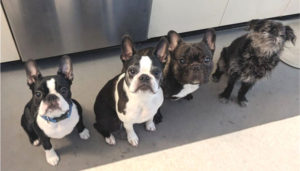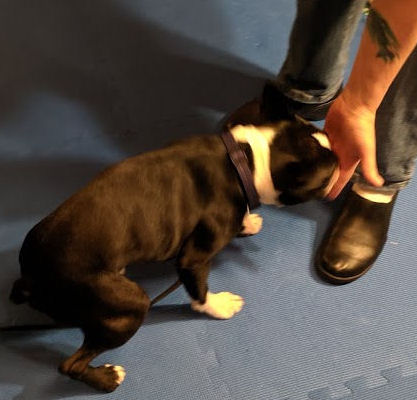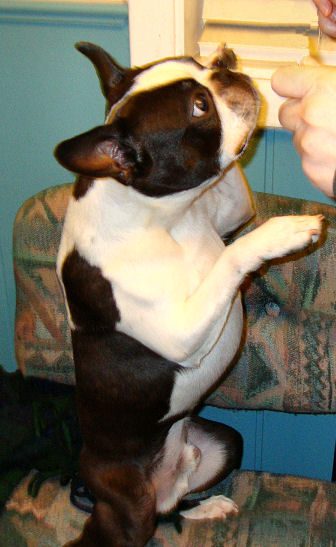Absolute obedience isn’t really our thing with dogs. We want to have fun and play with our dogs. Some trainers get robotic precision from their dogs, but that’s not us.
Every rule has an exception. There are three (3) commands that we demand our dogs know cold. Because these three, in desperate circumstances, can be the ones to save your dog.
Most important: Come!

The most graphic personal example we have for this one wasn’t dire, but pretty darn serious. Quite a few years ago, before we were smart enough to get a motion-detecting light in our backyard, we had a critter visitor. Hope was out, after dark, with our Brussels Griffon Razzmatazz. Razzy was showing a lot of interest in something under the shelves on our patio. A pocket flashlight revealed telltale stripes of black and white.
Hope yelled “Razz, come!”
In all honesty, until that day he’d never shown much interest in immediate compliance. There may have been a tinge of desperation in Hope’s voice – he dashed over to her, got scooped up, and she ran in the house. Skunking averted!
More common scenarios for having a good recall (Come!) would include:
- outside door left open
- unknown dog or person approaching
- oncoming traffic
We know that many people aspire to walk their dogs off leash. It’s not something we encourage, but if it is your ambition, be sure your recall is reliable before you dare take a leash off. Practice in the largest, enclosed space you can find. Local tennis courts are a good option.
Just in case your recall isn’t as good as you hoped, take some high-value rewards with you to practice. Be ready to pull out your dog’s favorite toy and run in the opposite direction. Chasing a dog never works – they turn it into a game of “catch me if you can.” Instead, run away and let your dog chase you.
For more fun games that will reinforce a solid “Come!” command, check out the 2-Minute Trainer Ebook 2: Come!
Second: Stay!

There’s a time to come, and time not to. If your dog has escaped from your yard and dashed across a busy street, luckily avoiding traffic, you don’t want to press your luck. Better to tell your dog to “Stay!” while you go to him.
Even better, having a good “Stay!” when the pizza delivery person rings the bell and your dog doesn’t run out at all.
Or “Stay!” when Aunt Gertrude is maneuvering around the house with her cane or walker. The last thing she needs to worry about is breaking a kneecap falling over the dog. That happened to our cousin, whose German Shepherd was “helping” her find her way to the bathroom in the middle of the night.
Stay is also great for vacuuming, bringing in groceries, taking laundry downstairs to the washer, bringing it back up from the dryer, etc.
Third: Drop it!
Several years ago a neighbor or ours thought it was a good idea to put poison in his backyard shed to get rid of chipmunks. It wasn’t. Wildlife carried those sticks of poison all over the neighborhood. We found out about it when Hope’s first French Bulldog, Dax, picked one up in our own yard.
Fortunately, Dax knew “drop it!” and did. Unfortunately, we hadn’t noticed for a couple of minutes and she spent a miserable day at the vet’s office getting her stomach pumped and medicine administered. She recovered and we had more time with her.
If she hadn’t known the command – the outcome may not have been as good. Teach “drop it” by trading your dog one valuable item for another. Let your dog know something good is coming. Something even better than the thing she has.
Useful commands
There are few absolutes in dog training. For us, these three represent the ones all our dogs must know, and do, when we ask them.



